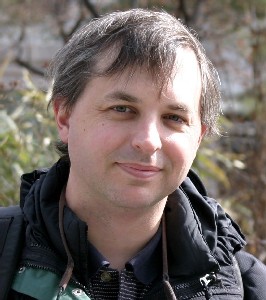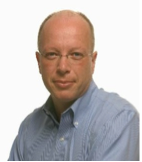LCN 2012
Tuesday, 23 October 2012
Comparing Information-Centric and Delay-Tolerant Networking
Dr. Kevin Fall
Principal Engineer
Qualcomm
USA
ABSTRACT
Delay-Tolerant Networking (DTN) and Information-Centric Networking (ICN) represent two new approaches to networking that have been proposed by the research community over the last few years. DTN has explored methods to interconnect networks with various naming, routing and delivery semantics with store-carry-forward delay-tolerant operations, while several ICN-related projects are exploring the naming of data objects instead of nodes, in-network caching and routing, and support for a form of delay-tolerance as a byproduct.
This talk will cover the basic goals and results of each style of networking, and highlight common lessons learned that contrast the benefits of these approaches with the current IP-based Internet architecture.
ABOUT THE SPEAKER
 Kevin Fall, Ph.D., is a Principal Engineer at Qualcomm Incorporated. He is also co-chair of the Delay Tolerant Networking Research Group, member of the DARPA ISAT Study Group, and former member of the Internet Architecture Board. He is a Fellow of the IEEE, and author of the second edition of the textbook, TCP/IP Illustrated, Volume 1.
Kevin Fall, Ph.D., is a Principal Engineer at Qualcomm Incorporated. He is also co-chair of the Delay Tolerant Networking Research Group, member of the DARPA ISAT Study Group, and former member of the Internet Architecture Board. He is a Fellow of the IEEE, and author of the second edition of the textbook, TCP/IP Illustrated, Volume 1.
Prior to joining Qualcomm in late 2011, he was a Principal Engineer at Intel Labs for 12 years. Prior to this, he was the principal network architect at NetBoost corporation (acquired by Intel), an adjunct professor of computer science at UC Berkeley, staff scientist at the Lawrence Berkeley National Laboratory, and visiting scholar at the Woods Hole Oceanographic Institution. He has over 25 years of experience in computer systems and networking. Specific areas include network protocols and architecture, network simulation, and security.
Wednesday, 24 October 2012
A Fine-Grained Distance Metric for Analyzing Internet Topology
Professor Mark Crovella
Computer Science Department
Boston University
Boston, Massachusetts, USA
ABSTRACT
One of the defining properties of small worlds is the prevalence of short paths connecting node pairs. Unfortunately, as a result the usual notion of distance is not particularly helpful in distinguishing neighborhoods in such graphs. This is the case, for example, when analyzing the interdomain routing system of the Internet.
We describe a motivating problem that requires a finer-grained notion of distance. The problem is quite simple to state: how can any given network operator in the Internet determine which paths pass through its network? Surprisingly, the nature of Internet routing makes this question rather hard to answer.
To address this problem, we define a new distance metric on graph nodes. This metric has useful and interesting properties: it is easy to compute and understand, it can be used to sharply distinguish neighborhoods in networks, and it remains useful even in small-world networks. We show how we use this metric to address our motivating problem, and more generally how it can be used for visualization and dimensionality reduction of complex networks.
ABOUT THE SPEAKER
 Mark Crovella is Professor of Computer Science at Boston University, where he has been since 1994. During 2003-2004, he was a Visiting Associate Professor at the Laboratoire d'Infomatique de Paris VI (LIP6). He received a B.S. from Cornell University in 1982, and an M.S. from the State University of New York at Buffalo. He received his Ph.D. in Computer Science from the University of Rochester in 1994. From 1984 to 1994 he worked at Calspan Corporation in Buffalo NY, eventually as a Senior Computer Scientist.
Mark Crovella is Professor of Computer Science at Boston University, where he has been since 1994. During 2003-2004, he was a Visiting Associate Professor at the Laboratoire d'Infomatique de Paris VI (LIP6). He received a B.S. from Cornell University in 1982, and an M.S. from the State University of New York at Buffalo. He received his Ph.D. in Computer Science from the University of Rochester in 1994. From 1984 to 1994 he worked at Calspan Corporation in Buffalo NY, eventually as a Senior Computer Scientist. His research interests are in performance evaluation, focusing on parallel and networked computer systems. In the networking arena, he has worked on characterizing the Internet and the World Wide Web. He has explored the presence and implications of self-similarity and heavy-tailed distributions in network traffic and Web workloads. He has also investigated the implications of Web workloads for the design of scalable and cost-effective Web servers. In addition he has made numerous contributions to Internet measurement and modeling; and he has examined the impact of network properties on the design of protocols and the construction of statistical models. As of 2012, Google Scholar reports over 16,000 citations to his work. He has given numerous invited talks and tutorials, and is a founder of and consultant to companies involved in Internet technologies.
Professor Crovella is co-author of Internet Measurement: Infrastructure, Traffic, and Applications (Wiley Press, 2006) and is the author of over one hundred papers on networking and computer systems. He holds five patents deriving from his research. Between 2007 and 2009 he was Chair of ACM SIGCOMM. He is a past editor for Computer Communication Review, IEEE/ACM Transactions on Networking, Computer Networks, and IEEE Transactions on Computers. He was the Program Chair for the 2003 ACM SIGCOMM Internet Measurement Conference and for IFIP Networking 2010, and the General Chair of the 2005 Passive and Active Measurement Workshop. His paper (with Azer Bestavros) "elf-Similarity in World Wide Web Traffic: Evidence and Possible Causes" received the 2010 ACM SIGMETRICS Test of Time Award, and his paper (with Paul Barford) "Critical Path Analysis of TCP Transactions" was nominated for the 2002 William Bennett Prize, given annually to the best paper published in IEEE/ACM Transactions on Networking. Professor Crovella is a Fellow of the ACM and the IEEE.
|



